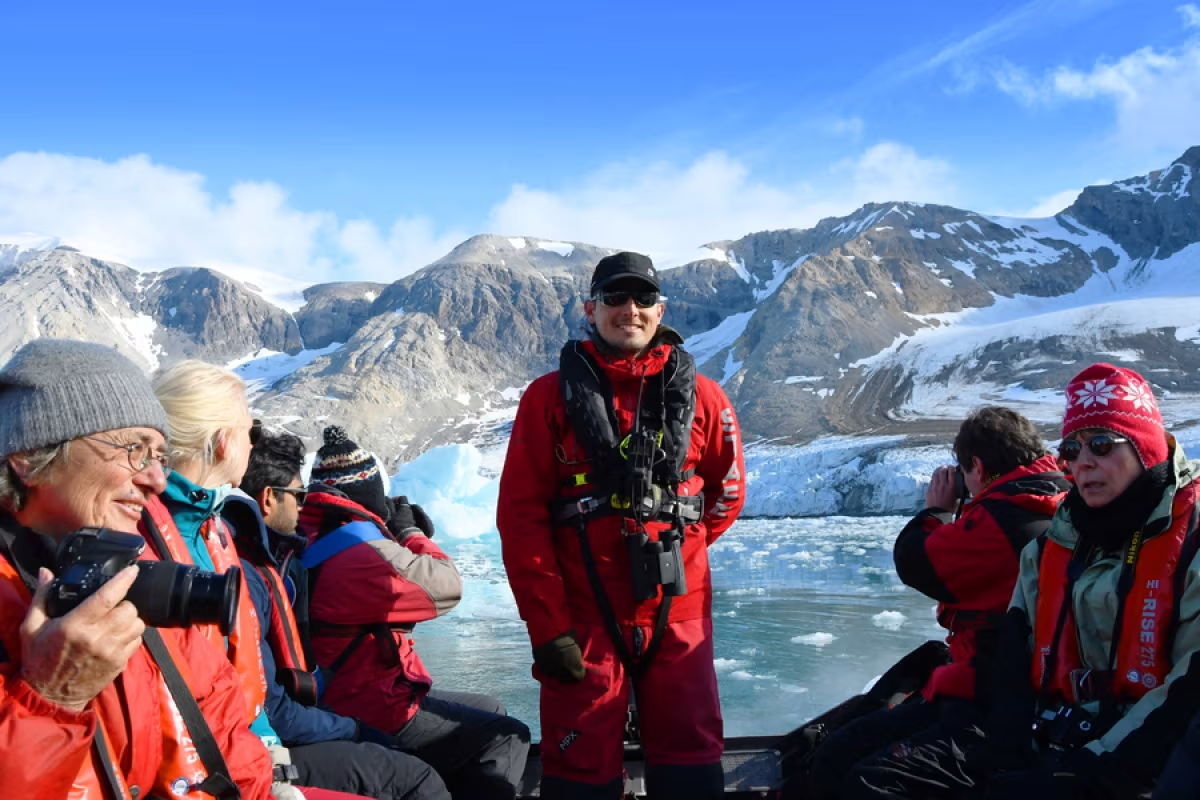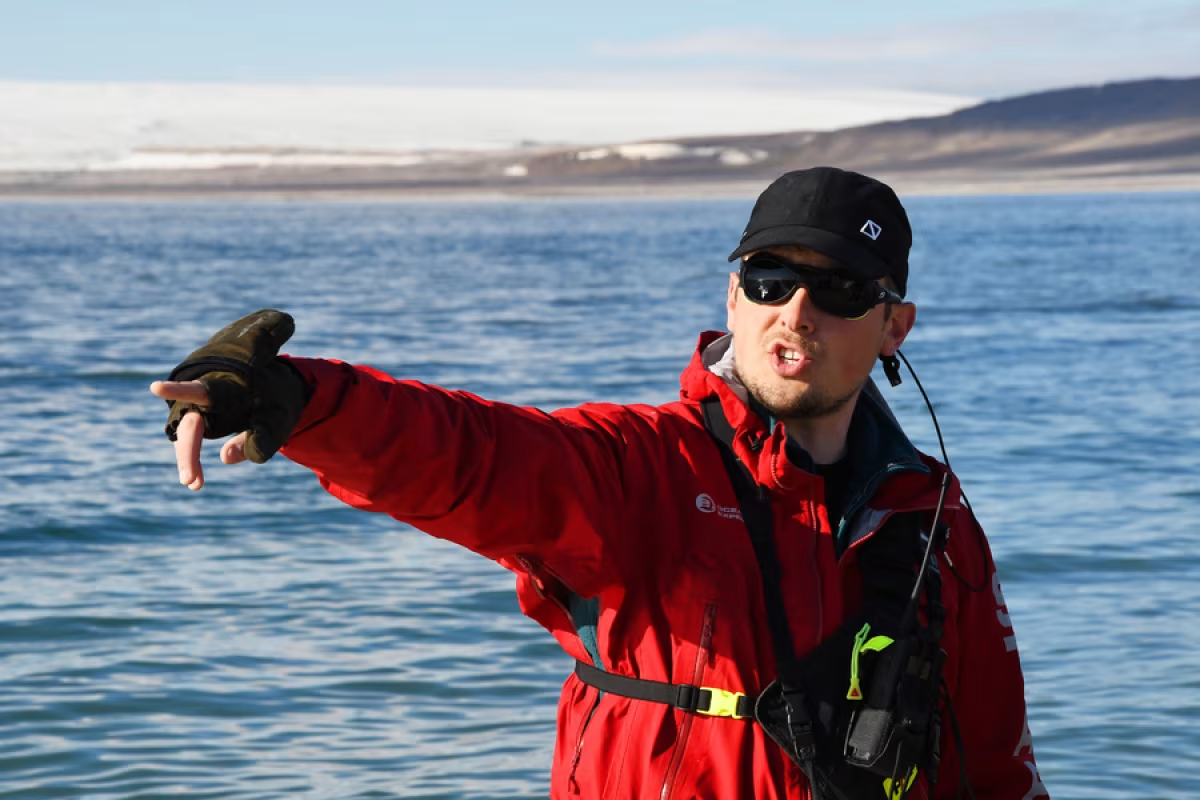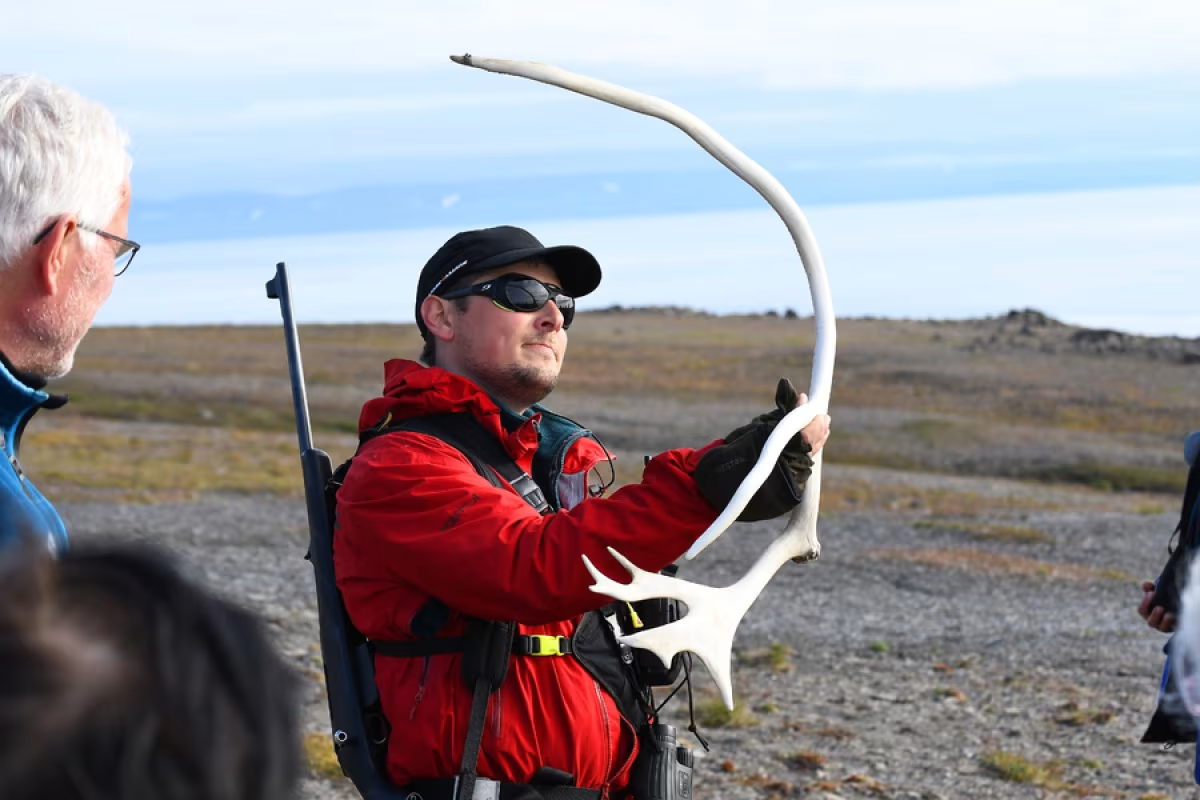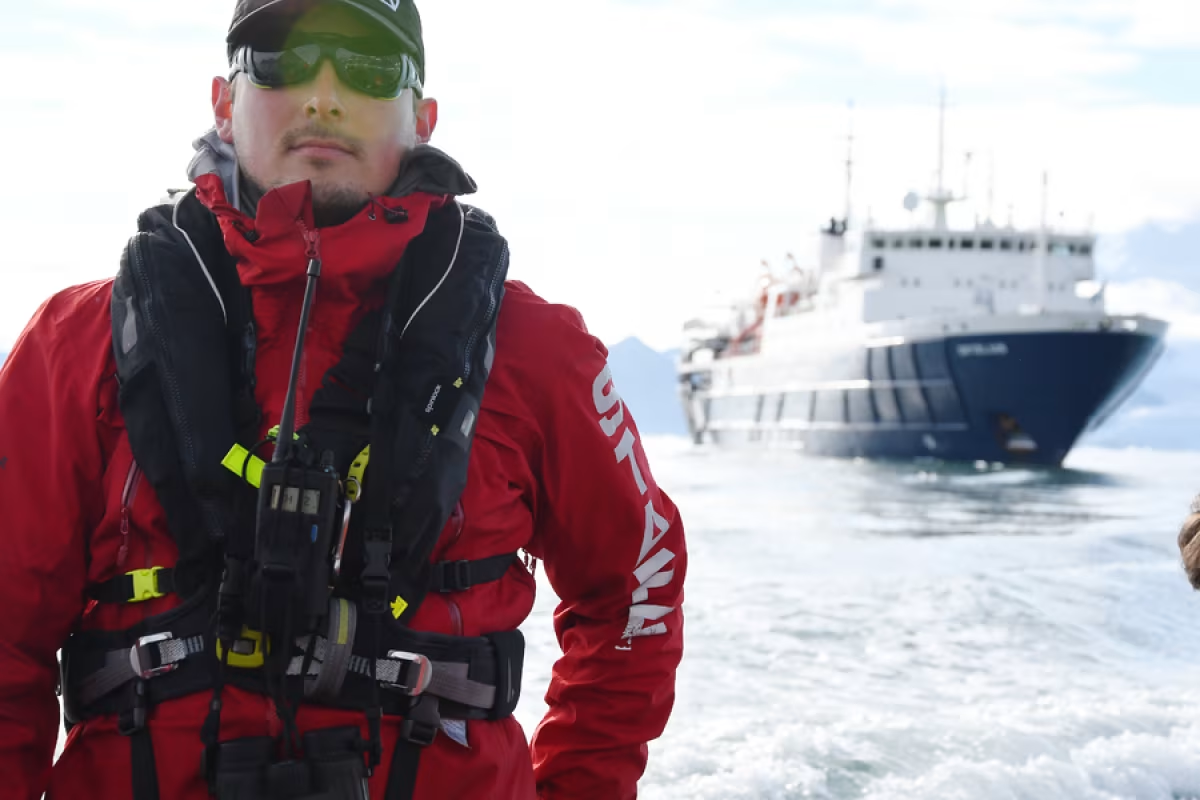The hidden ninety percent of polar expedition life
For adventure lovers, a common reaction to meeting polar expedition guides is that they have the coolest job on the planet.
They spend most of their time outdoors, piloting Zodiacs and looking for wildlife and leading travelers through some of Earth’s most dramatic landscapes. And as a bonus, they get to pack around really big bear rifles – which we of course hope they never have to use.
But naturally, there’s more to being an expedition guide than the perks, and even more to being an expedition leader. It’s a late-to-bed, early-to-rise job that, like icebergs, shows only about ten percent of itself while the rest lies hidden from sight.
We chatted with expedition leader Michael Ginzburg to get some background on that hidden ninety percent and what attracts him to the whole hundred.

Guides of the Arctic and Antarctica
“There are a lot of dangerous aspects out here,” says Ginzburg, walking at the lead of the seventy-odd passengers joining us on this spirited midday hike. “We’re in polar bear country, so we have to carry these firearms. But we also operate Zodiacs in very cold waters. Having everything under control and knowing exactly what we’re doing is very important.”
Adjusting the rifle on his shoulder, Ginzburg keeps a close eye on the other armed guides nearby, all of them on the lookout for bears.
Then he glances back at the passengers taking pictures, talking among themselves, marveling at the stark landscape's beyond-the-Wall beauty. “But from my experience, most of the truly dangerous situations are created by people themselves. Because they panic.”
This, he explains, is what he has to watch out for, though usually the excitement he encounters has more to do with a blue whale sighting than a bear.

Polar cruise plans and procedures
Most people who embark on Arctic and Antarctic cruises see only the PR aspects of expedition leadership: The EL wishes the ship good morning over the intercom, gives the day’s briefing to an observation lounge full of passengers sipping coffee and gnashing biscuits, and provides the evening recap just before the dinner bell rings.
What’s less often seen is the substantial work that circulates around these key routines.
“Long before the first passenger arrives,” Ginzburg tells us, “I meet with the captain, guides, hotel manager, and chef to say hello and have a quick chat. Then I sit with the EL from the previous cruise to do the handover – this is where I get an update on all the equipment, for example.”
“After that, I get the guides on the same page about plans and duties. And later on, I meet with the captain again to check weather reports and ice charts, confirming the plan for the next day. Only once all that is done do I do anything visible to the passengers.”
These visible duties, he says, include introducing the guides, running safety drills with everyone on board, and starting his round-the-clock wildlife watch after the vessel has pushed out of port.

The allure of the Arctic, the attraction of Antarctica
In the David Lean film, Lawrence of Arabia, T.E. Lawrence (played by Peter O’Toole) explains his love of the desert elegantly: “It’s clean.”
While this is an admirably powerful snippet of cinematic phrasing, in real life it can be a bit more difficult to so clearly articulate our preference for one landscape over another, as such things tend to operate on a gut level and defy rational explanation.
When asked why he’s drawn to the polar regions and not, say, swamps or forests, Ginzburg’s first answer comes from the gut: “The ice just has some fascination for me.”
But squinting across the snow, which glitters like glass dust, he finds more to say: “Also, I really like that mankind discovered the poles recently. It was the limit of what was possible for a long time. That undiscovered aspect gives me goosebumps.”

From science to pictures to polar cruises
Ginzburg slows for a moment to click his radio, saying something to the crew back on Plancius. Meanwhile, the guides are telling the passengers all about a scatter of whale bones farther up the beach.
Plancius, the polar vessel that’s carrying our group through the Arctic, is anchored in the bay behind us, beyond the fleet of parked Zodiacs that shuttled us to shore. Its crew has been watching the progress of our hike this whole time, in part as an extra level of precaution against polar bears.
Though only in his late twenties, Ginzburg is accustomed to this level of responsibility.
He started out doing field research and scientific expeditions, deciding this was the most interesting way to work in the polar regions. Afterward, he switched to being a full-time photojournalist specializing in, not surprisingly, expeditions.
So it was no great leap when he began his position as a guide for Antarctic and Arctic voyages, eventually working his way to the rank of expedition leader.
“I just like to explore new things,” he says, lowering his radio and rejoining the hike. “I don’t miss internet and cell reception, but sometimes I wish I could have my family out here experiencing these amazing moments with me.”

Instilling awe of the Arctic and Antarctica
We hike for about an hour longer, taking in sights that seem to have dropped out of another world – or an earlier version of this one.
Then Ginzburg announces it’s time to head back. Plancius, now miniature in the far-off bay, sits dwarfed by the immensity of its surroundings, resembling more a bath toy bobbing in a pond than an ice-strengthened polar vessel.
Ginzburg turns toward it, and the guides fall into position. The passengers follow us, scrolling through their cell phones and cameras, comparing digital treasures they’ve captured during the hike.
“We once had a full charter with an education program,” Ginzburg recalls. “Mostly kids and teachers. It can be hard to fascinate kids after two weeks of polar exploration, history, and geology.”
“But there was this one boy, David, who came to me when all the other kids were playing around, not really cherishing where they were. He told me how beautiful the tundra was to him, how much he loved seeing all the animals in it. One time he spotted an Arctic fox and was so excited he dropped his camera. He just screamed, ‘Fox!’ and slapped his hands to his head, almost forgetting to take a picture.”
Ginzburg laughs to remember it. “If I can make even one percent of the people I travel with feel that way about the polar regions, I’m happy in my work.”
Continuing back to the ship with him, we’re confident that in his one percent lies the ninety we’ve been looking for.







